I couldn’t believe my luck when I saw Dave’s post on the NZ Tramping Facebook page offering a three-day ‘introduction to hunting’ trip in exchange for an article. I instantly messaged him a small essay on how much the experience would mean to me. I figured the trip would be just what I needed to boost my confidence and knowledge so that I could finally get out there and do it myself.
Growing Up
I’d been tramping since before I could walk, spending my first couple of years enjoying New Zealand’s wilderness from the comfort of a toddler backpack. It was Mum who introduced me to what our backcountry in New Zealand has to offer, and tramping together will always be our thing.
Originally from Nelson, I grew up beside the ocean partaking in a variety of water sports and equestrian activities. My diet mirrored my dad’s as a pescatarian, while my mum has always been a strict vegetarian. Both my parents stopped eating meat in the ’80s, resulting in all meat-related food being practically foreign to me, only seen in the playground or at friends’ houses. I was never curious enough to try eating it during my childhood; my diet was healthy and balanced and, believe it or not, vegetarian food is delicious!
Nearing the end of high school, I thought about what I’d do next. Something that had always interested me, since watching an episode of Country Calendar, was high-country farming. The show had depicted a woman and her dogs getting choppered up onto a ridgeline and then mustering down into a stunning valley. Time in the outdoors working with animals – what a job!
Learning on the Job
Mum encouraged me to reach out to some distant relatives, which ultimately led to an opportunity for me to work as the cook on Walter Peak Station. Although I’d never eaten or cooked meat previously, I liked cooking and figured that if I stuck to the recipes, I couldn’t go too wrong – it was a learn-on-the-job situation.
During the first two months, I also learnt a lot about farming and rural life. I trailed along on a couple of stalks for pest control, during the Roar and on meat hunts, slowly picking up some basic knowledge of hunting. Prior to this, I’d only ever heard a stag roar in the Tararua Ranges. We’d thought it injured or dying! How wrong we were.
After two months on the job, I was at the dining table eating imported, frozen fish cutlets while everyone else tucked into wild venison back steak. It hit me as ridiculous. I was eating food likely to be unethically caught, over-processed and far from the source, while everyone else’s meal was humanely processed, fresh and ethically harvested basically right on our doorstep. That day, I realised it was far more important that I care about where my food comes from than try to squeeze my diet into restrictive brackets.
I then had the privilege of going on a couple of hunts where the target was to harvest an animal myself. Although my interest in hunting continued after leaving the station and starting uni, I never got around to getting my firearms licence. The idea of hunting alone with little experience was off-putting.
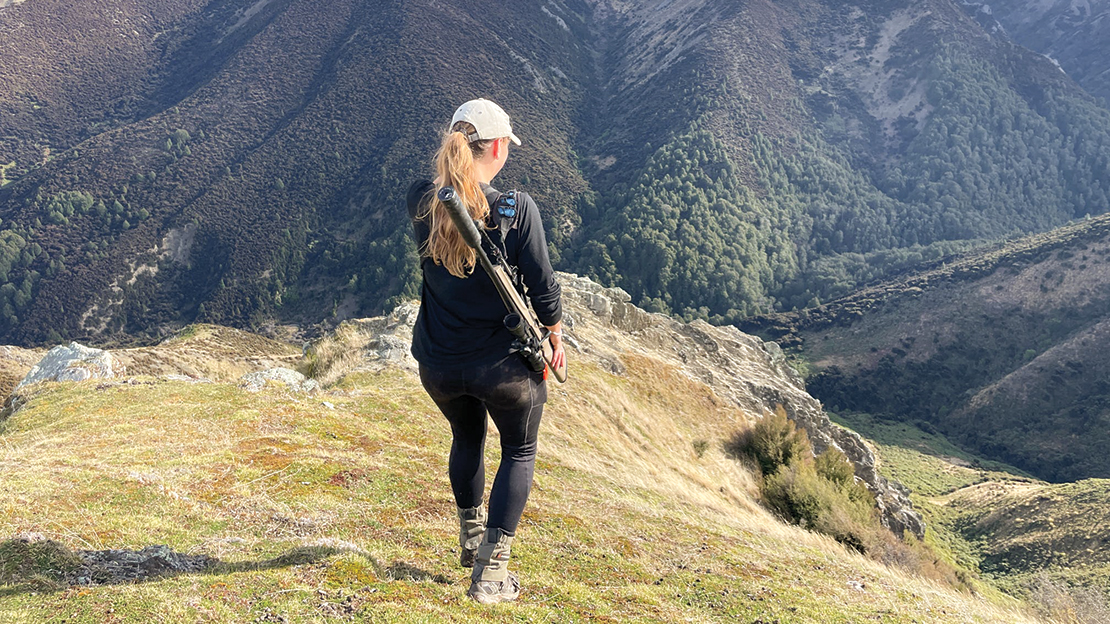
Hunter Ethics and Responsibilities
The trip began before light, leaving Christchurch at 4:30am and meeting the team at Windwhistle before convoying down to Glendene Station. When I saw Dave and his red Jeep, I knew we were on for a mission.
Driving down, he explained how privileged we are in New Zealand with our range of big game animals and diverse terrain, along with relatively loose hunting regulations. This said, we also discussed the ethics of hunting, including the act of taking an animal’s life, considering other people in the backcountry, being knowledgeable about the land, tracks and any restrictions prior to a trip, as well as thinking about environmental care and a hunter’s responsibility to keep animal numbers down.
Halfway there, Dave confided that he hadn’t yet organised the trip menu. My reaction resulted in me being designated camp cook, and we stopped off at a Four Square for me to purchase the necessary food, courtesy of NZRod&Rifle.
Animal Preferences
As we drove through Lindis Pass, I got the rundown on animal behaviour – important stuff to understand if I ever wanted to find animals on my own. I didn’t realise there was so much variety between animal species and their preferred environments and habits.
Because it was winter, I learnt to look for where the sun was hitting, as deer would be out feeding in the warmth to keep condition. This is different to summer, when the animals are more likely to be out feeding early before bedding down in the shade, avoiding the warmest part of the day, then feeding again in the evening.
Although I was aware that tahr and chamois like to be up high in bluffy, rocky outcrops, I didn’t realise it was because they like the safety of being above, looking down for danger. It was also interesting to learn the key differences between red and fallow deer. Red deer in New Zealand originally came from England and Scotland; therefore, they endure our often cold and unpredictable weather far better than fallow, which originated from the Mediterranean and prefer sunny days.
Glendene Station
With bellies full after a big scoff at the Fairlie Bakehouse, we arrived at Glendene in good time. A quick look around and I saw some of the biggest heads I’ve seen – massive and stacked with points, all tagged and being processed before heading overseas. Their owners must’ve had quite a thrilling hunting trip.
As a past vego and still conscious about animal welfare and all, it was good to talk through the ethics of trophy hunting with the knowledgeable NZRod&Rifle crew. Our conversations resulted in me feeling good about the practice, knowing that compared with intensive farming, it’s easy on the environment, the animals have a quick humane death, it raises international awareness and respect for New Zealand’s unique environment, and is overall good for the economy.
The welcoming Glendene staff were great and after a quick tour, pointed us in the direction of our 4WD track. The station owner Richard generously gave us permission to shoot anything except for stags with more than 12 points and fallow bucks. What an opportunity!
Once the quads were loaded, we headed up to our accommodation for the night: a warm four-bunk log cabin with views from the deck extending up two good-looking gullies.
First Things First
Billie Jean and I got the rundown in gun safety before firing some shots at the dong from 200m to get our eye in. My biggest takeaways were that unless you’re about to take a shot, firearms must be unloaded at ALL times, and that you only take a shot when you’re 100% happy with it.
Like tramping, it seems the most prevalent risks while hunting are river crossings, the weather and knife work.
Tahu, Hooky’s son, took one for the team and got on all fours so Dave could demonstrate shot placement. We were told the most swift and humane way to kill animals was either a headshot (only in certain situations), through the neck (hitting the spine) or through the shoulder into the animal’s vitals – the latter being best for beginners, providing the biggest target and ideally getting a bullet through the animal’s lungs and heart for a quick death while avoiding spoiling as much meat as possible.
Broadside is best, and if the animal is quartering either towards or away, it’s important to make an adjustment of shot. If the appropriate line of fire is not taken, the bullet may miss completely or only injure the animal, which then needs to be followed up quickly by an effective lethal shot.
The idea of injuring an animal and not being able to either find it or finish it churns the gut, but it’s a risk that comes with hunting and is why each shot lined up should be well-considered and taken with care.
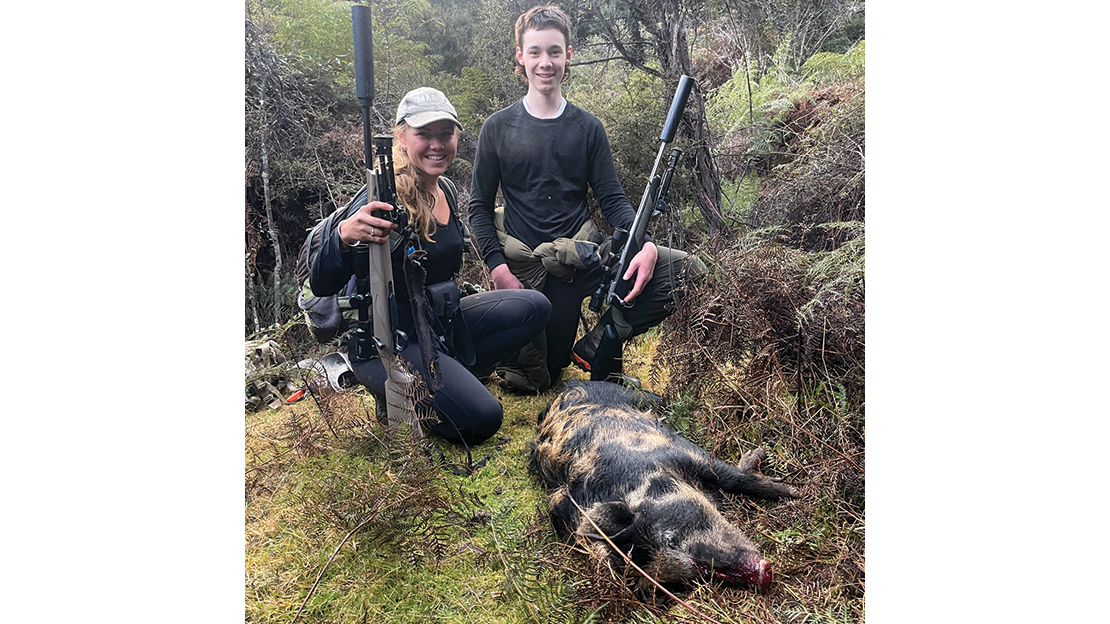
Two Goats
Once Dave and Hooky were happy with our shooting, we split into two separate groups and headed in opposite directions. Dave and I didn’t get far up the valley before we heard a billy goat bleat. We’d seen a herd of goats up near the ridgeline, and I figured the sound just travelled well, but Dave reckoned there was one closer.
Sure enough, a billy and nanny promptly wandered into sight about 40m above us. Although we were standing well out in the open, they didn’t even look at us. I thought they must be used to humans, but afterwards, Dave explained how we were right in the shadow and the sun’s glare would’ve made it difficult for them to see what we were.
I decided to make the most of an easy shot, dropping the billy first, and when the nanny hung around, I got her too, reasoning that she’d be far better eating. The adrenaline was unmatched.
After dragging the goats to a spot in the shade and observing my first lesson in gutting, we continued along the track, taking care to be silent and stealthy. A few steps … look around … repeat.
Primo Venison
A rocky ridgeline above steep grassland with small patches of bush below led down to a gorge-like creek. As the sun edged down, a group of young stags crested a saddle. Further along, another couple of feeding reds were accompanied by a ballsy young fallow buck. A large mob of hinds watched us from the shaded side of the valley; the wind was good, so they weren’t too bothered by us.
With the hillside crawling with animals and options aplenty, Dave let me decide what to do. Having passed a nice mob of does not far from the track and figuring that it’d be a great chance to fill the freezer with primo venison, we doubled back.
Once I felt comfortable, I took a 210m shot and dropped the first doe before quickly realigning towards another at 260m and doing the same. Absolutely stoked. I don’t think Dave could quite believe at this point that I’d ever been a vegetarian.
Daylight faded as we raced up the hill to retrieve the animals. They were stunning – both young and in great condition.
We processed an animal each; I was really getting my hands dirty for the first time. Gutting an animal isn’t a pretty job but is a crucial part of the process. It’s all rather graphic though, and something I wasn’t quite prepared for was seeing embryos inside the animals. However, in regard to managing animal numbers, it’s an efficient way to control population. Once we removed the animals’ heads, we gave respect to them and the offal, thanking them for their lives and the kai they provided – another important part of the process. Knowing I’d respectfully harvested the animals, treating their carcasses with appreciation, aligns with my morals and allows me to feel comfortable with my diet as an omnivore.
Similar to Paua
Melody from Hookie’s guitar filled the hut that evening. We exchanged stories and had some laughs; I felt extremely lucky to be on this trip with such a great group of people. It was also the first time I’d cooked and eaten heart, but after thinly slicing the organ, frying it lightly with caramelised onions and garlic, it turned out quite delicious. Perhaps controversial, but in my opinion, similar to paua – yum!
Being one bed short, it was time for me to take one for the team and I slept on the ground – a blessing, as the hut was toastie.
Looking for Stags
Come morning, and after inhaling a cup of coffee, we watched deer appearing on the scrubby face opposite the hut. Everyone was keen to get out amongst it. I went with Hooky and Tahu this time, heading up the other valley in the 4WD to get some distance between us and the hut before setting off on foot.
After such a successful meat hunt the day prior, we now had stags on our minds. Animals up a steep bushy gut that opened into a wide basin below a snowy peak caught our attention. A novice at determining animal size and age through the binos had me reliant on Hooky for advice. I was keen to get off the track and, from what we could see, the biggest stags were up the hill.
Crossing the creek, we headed up steeply through the beech, using roots to pull ourselves out of the valley floor and making our way onto a broader ridgeline thinly covered with manuka.
Before going into full stealth mode, we had a quick lunch. I’d like to think I taught the boys a thing or two about quality eating in the outdoors. A gourmet selection of camembert, salami, crackers and herbs from my garden provided a tasty charcuterie situation, topped off with a premium tramping snack to replenish sodium levels: Crespo olives. Bellies full, we continued up to a rocky outcrop that provided a panoramic view to glass from.
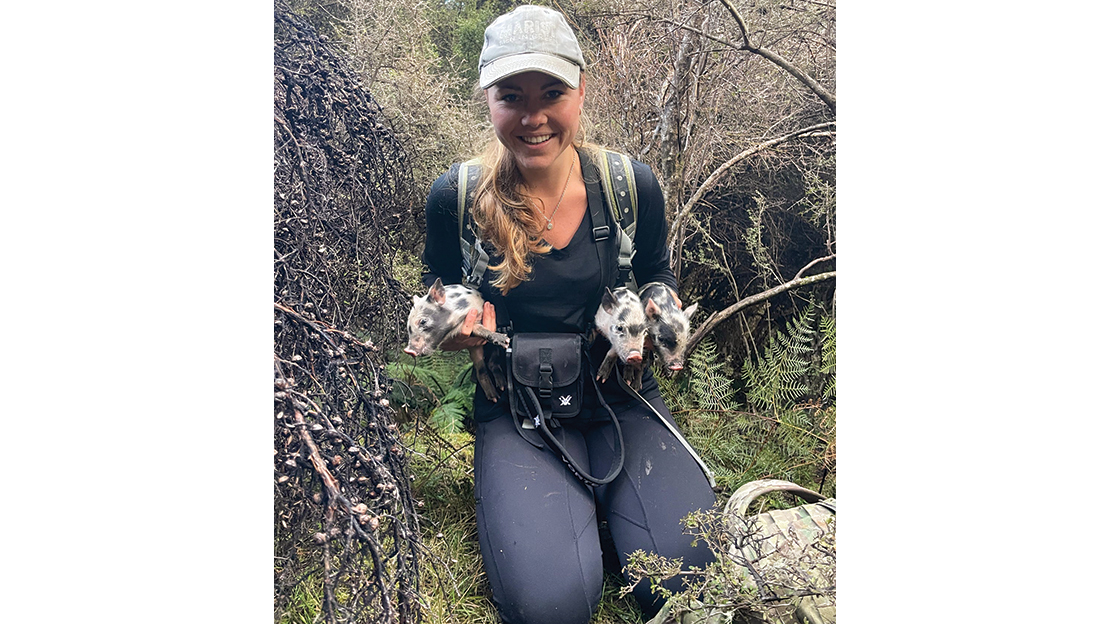
10-Pointer
Stags were soon visible; the more you looked, the more you saw. They were mostly in small groups, with the younger ones especially hanging out together. It was fantastic to just sit and observe their behaviours, absorbing the terrific landscape we were in. A highlight was spotting a group of five young stags way up in the snow hanging out with a pair of tahr.
Hooky explained how younger deer, specifically males, are often less predictable. Given the number of stags, we took our time assessing each one, eventually deciding to go after a nice-looking wide 10-pointer bedded down on a rocky face below us. After a semi-stealthy descent through thick scrub and manuka, we got within 200m and looked for a spot to shoot from.
I lined up, using the side of a manuka trunk to steady the gun. Squeezing the trigger, I felt I was on the mark, but he jumped and bolted straight down the face!
We bush-bashed over to make sure it was a clean miss. I was fairly certain it was. Phew! Although I was gutted to have ballsed up a chance at my first stag, the glassing, stalking and whole day out on the hill made for an epic day hunting.
Three Little Pigs
Returning, we found ourselves climbing under and through tough scrub. Suddenly, there was a ruckus in the bushes ahead … oinking, squeaking, grunting. I hung back while the guys took out a nice sow, but some noises continued. Three little piglets!
With Hooky’s approval, I wrapped them in my fleece and raincoat, and we agreed they would be hand reared. I led the way, pushing a path with my precious cargo while Tahu did the hard work, lugging the heavy sow uphill and reconnecting with the track.
Returning to the hut, the piglets were named appropriately: the stroppy pale one, ‘Rod’, the nice dark one, ‘Rifle’, and the runt, ‘Hooky Jr’. With a bit of Kiwi ingenuity, we fed them warm milk out of the corner of a plastic bag, and they soon seemed reasonably settled, considering the circumstances.
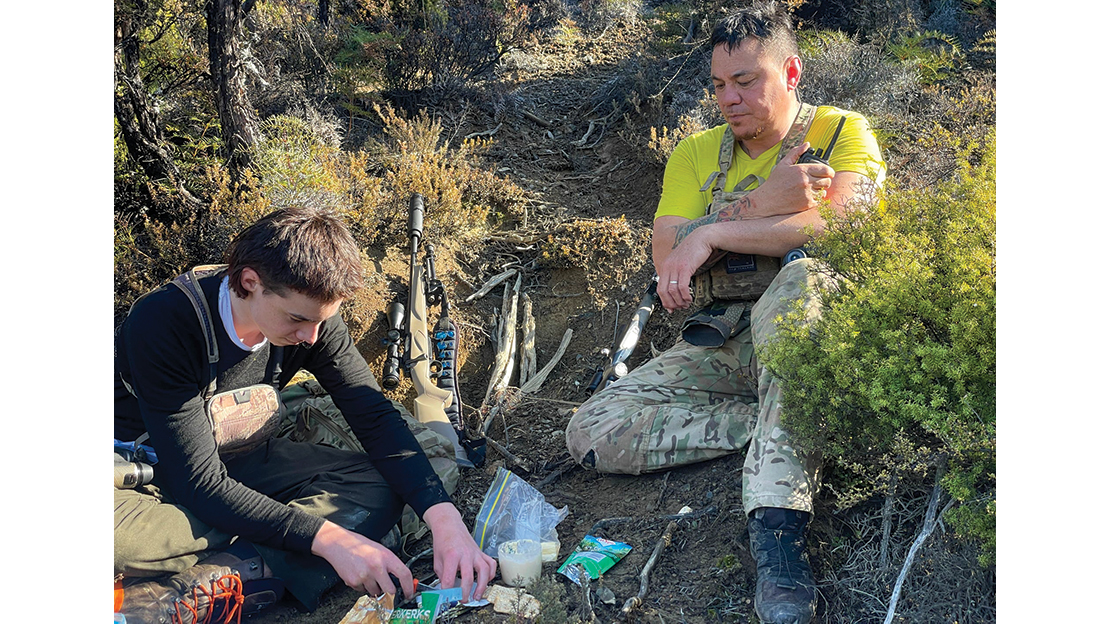
Last Day
The final morning hunt saw us lined up on a hind for about 30 mins and simply not getting a chance at a clear broadside shot. Content at this point that we had enough meat to keep everyone’s freezers full, we decided to have some fun and see how close we could get without spooking her.
Somewhere between closing the gap from 60m to 30m, we must’ve done just that. However, in the process, we stumbled onto a mature fallow buck. It was thrilling to watch him prance away until he was over a distant ridge – a reminder that it’s not all about pulling the trigger.
Grateful
Everyone else’s hunting provided me with plenty of practice gutting and processing deer, skills that I’m extremely grateful to have learnt. We returned to the hut at about 4pm and wasted no time skinning animals and packing up the hut, quad bikes and piglets for our trip home.
When it came time to leave, it felt like more than two nights since we’d all met. I feel privileged to have spent days hunting with such knowledgeable people and to have had access to the Glendene Station. The experience boosted my confidence, and I’m now in the process of applying for a firearms licence, however unlikely it is for there to be so many deer on public land!
Eating Meat
Hunting done right is both environmentally sustainable and a fantastic way to encourage use of our backcountry while feeding family and friends. I struggle to comprehend how people eat meat and disregard that it’s from an animal; I find that so important. I don’t think I’ll ever be able to convert my parents back to being meat eaters, and honestly, I wouldn’t want to. Throughout my hunting journey they’ve been endlessly supportive, knowing that of all the types of meat to eat, wild game meat is simply the best.
Living in a flat of eight in Christchurch, we’ve already gotten through a fair bit of the trip’s meat – a highlight, aside from the obvious back steak, being pulled pork. This crowd-pleasing recipe is unbelievably simple. Take any pork roast, pour over a jar of Lee Kum Kee Hoisin sauce with a dash of water and slow cook on low for eight hours. Serve in a burger with coleslaw.
Knowing where our food comes from should be normal. Gardens are great – homemade is best. Hunting from the land and understanding the processes are too. The change from vegetarian to ethical omnivore felt so natural … because it is.

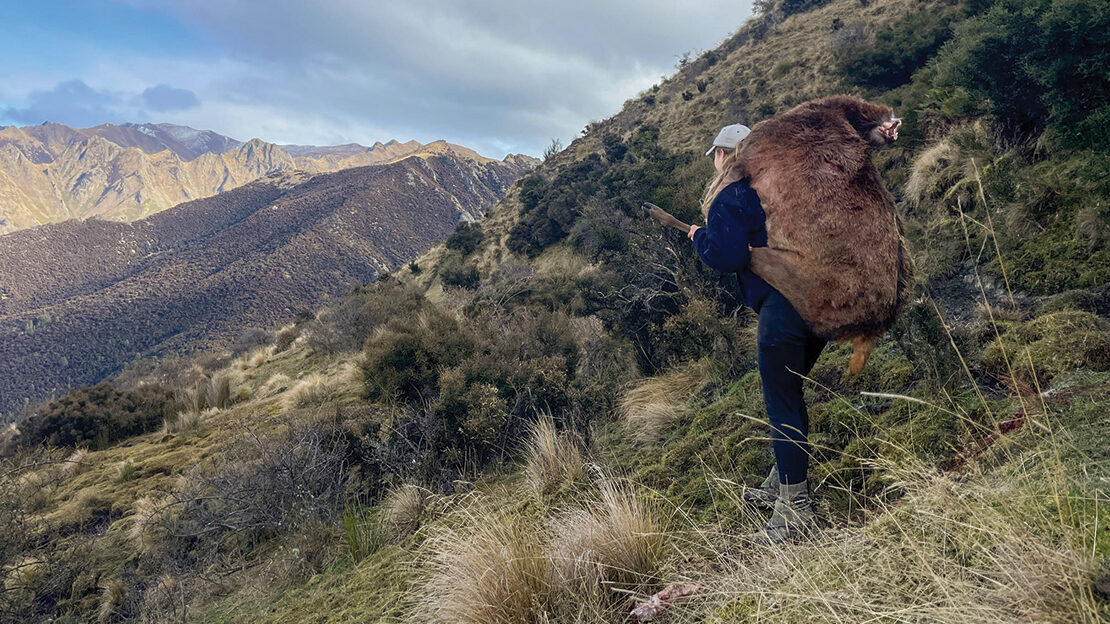
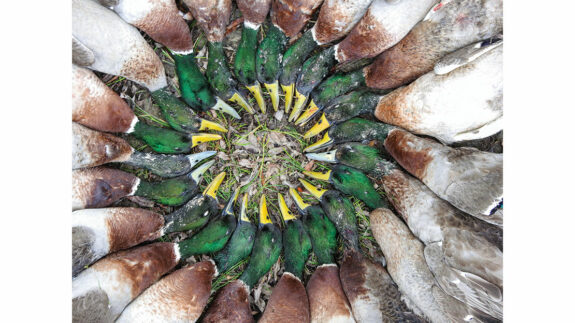
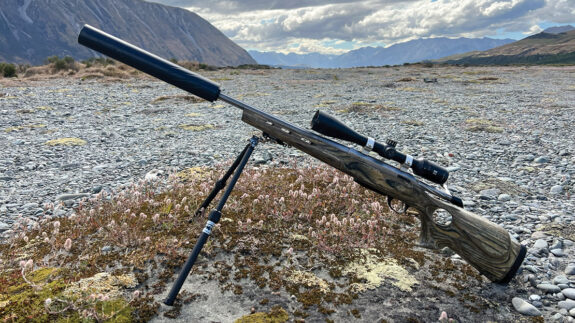

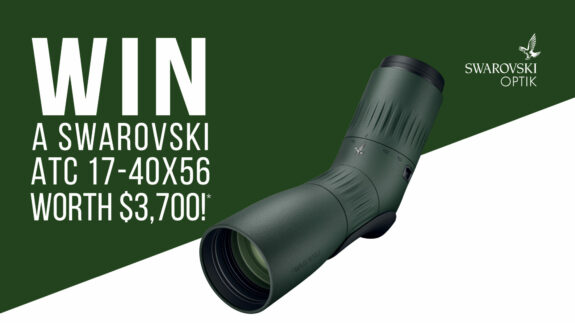
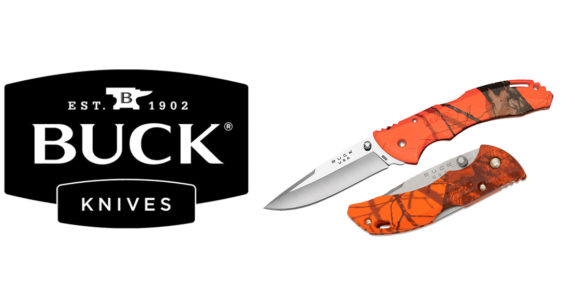
SHARE YOUR BEST PICS #NZRODANDRIFLE